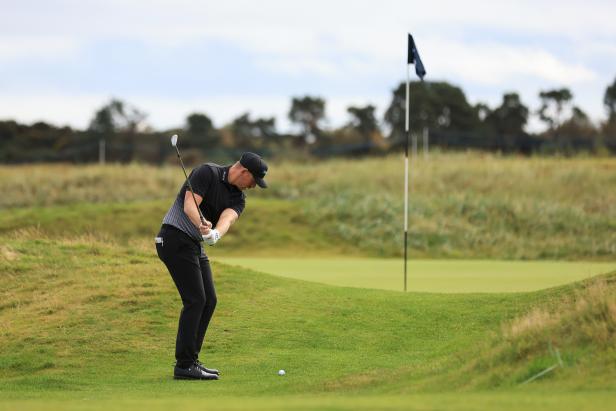With the U.S. Open behind us, it means the golf calendar has entered what I consider the best part of the season.
Links season. The time of year when regular golfers fly away to their buddies trips abroad that they’re so excited about, and professional golf begins rolling through Scotland.
So, to get us excited for the start of links season, I welcomed onto the pod a good friend of mine, Sean Zak. Sean’s a talented writer at Golf.com, and recently wrote an awesome book about his summer in St. Andrews, which you can buy right here.
Sean is originally from Wisconsin, which meant his summer abroad was a bit of a golfing culture shock. But as golfers do, he adapted to the links conditions—and learned a useful chipping tip for the rest of us along the way.
You’ve probably heard the term “bounce” before.
Oversimplified, bounce is a term for the angle and width of the sole of the club. The more bounce you have on your wedge, the less likely your wedge is to dig into the ground—it’ll bounce off of it instead.
“There was too much meat on the bottom of the club,” he says in the podcast below.
More bounce is generally helpful because it can prevent chunked shots, but on the dry sandy turf that links golf is played on, it can make life more difficult. The more Sean reached for his high-bounce lob wedge, the more he found his wedge would bounce off the turf and lead to skulled shots over the green.
So instead, Sean talks about how he learned to chip with his lower lofted wedge: His 52 degree.
With less bounce and less loft, the 52 degree wedge helped Sean dig the club more into the ground, which created a low driving ball flight, with lots of backspin and crispier contact.
Golf Digest Top 50 Teacher Michael Breed has an interesting video explaining why this shot works so well:
The next time you’re on dry, linksland turf, try reaching for a lower-lofted wedge. It’ll probably help.

